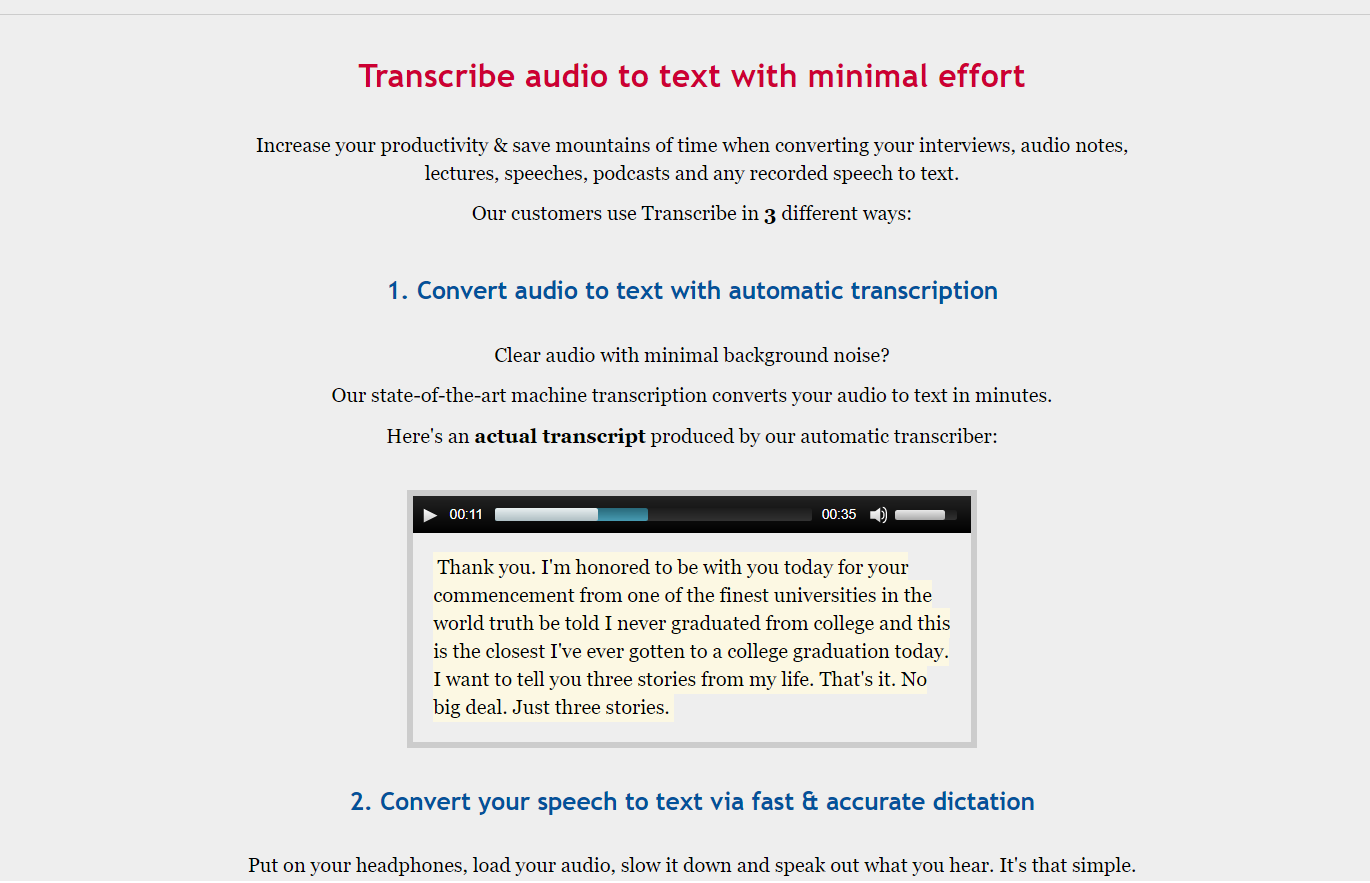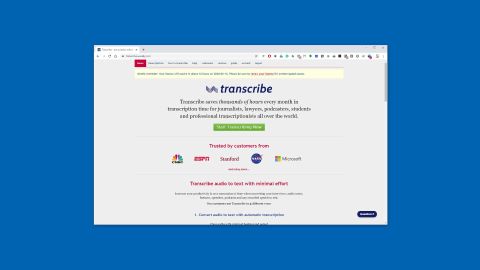
- WREALLY TRANSCRIBE HOW TO
- WREALLY TRANSCRIBE PDF
- WREALLY TRANSCRIBE SOFTWARE
- WREALLY TRANSCRIBE CODE
- WREALLY TRANSCRIBE MAC
When you want to work with Geo data, you only need to add a new Geo Document to your ATLAS.ti project. See Adding Documents for further information.
WREALLY TRANSCRIBE MAC
These can be played both in the Windows and in the Mac version.Īs video files can be quite sizable, we recommend linking video files to an ATLAS.ti projects rather than to import them. Supported video file formats are 3g2, 3gp, 3gp2, 3gpp, asf, avi, m4v, mov, mp4, wmvįor audio files, our recommendation is to use *.mp3 files with AAC audio, and for video files *.mp4 file with AAC audio and H.264 video. Supported audio file formats are: aac, m4a, mp3, mp4, wav. To resize and image manually, you can use the zoom function via the mouse wheel or the zoom button in ATLAS.ti. But this requires additional computer resources and unnecessarily uses space on your computer hard disk. ATLAS.ti does resize the images if they are too big.
WREALLY TRANSCRIBE SOFTWARE
When preparing a graphic file for use with ATLAS.ti, use image-processing software to reduce the size so that the graphics are comfortably displayed on your computer screen. Size recommendation: Digital cameras and scanners often create images with a resolution that significantly exceeds the resolution of your screen. Supported graphic file formats are: bmp, gif, jpeg, jpg, png, tif and tiff. vsdx) and Libre Office Draw (.odg) documents
WREALLY TRANSCRIBE PDF
The following file types will be transformed into PDF files, when adding them to an ATLAS.ti project: PDF files (eBooks, PowerPoint, Spreadsheets, Visio, Draw) You can use the bookmarks to navigate through your PDF document: In the contextual ribbon for Documents, click on View and activate Show Bookmarks: If your PDF documents have bookmarks, you can also use them in ATLAS.ti.

In the image below you see, how it looks like when this document is imported in ATLAS.ti:
WREALLY TRANSCRIBE CODE
Go through each quotation, open the coding tool and create new codes, or apply existing ones.Īnother option is to prepare an Excel table based on the comments you wrote and import it as your initial code list. Based on your comments you can begin with your coding work. Open the Quotation Manager alongside the document, so you can read the comments you wrote. If you add this transcript to ATLAS.ti, all commented segments will already be marked as quotations. Perhaps you first read a transcript in Word and write initial coding ideas as comments in the margin. PDF documents with annotations imported in ATLAS.ti Imported comments from PDF documents will be coded with the code Imported annotations. Imported comments from Word will be coded with the code Imported comments. If you added handwritten drawings or comments, those will be imported as image quotations (in ATLAS.ti Windows currently only supported for PDF documents). The text of the annotation will be added as a comment to the quotation. If you have made annotations in Word or PDF files, ATLAS.ti will turn the highlighted area into a quotation. PDF with annotations / Word files with comments It is a layout format and not meant for text processing. This is due to the nature of PDF as mentioned above. When you retrieve text from a coded PDF segment the output will be rich text. Another option is to apply character recognition in your PDF reader/writer software. When scanning a text from paper, you need to use character recognition software (OCR, frequently provided with your scanner) in order to create a text PDF file. If you do the latter, then ATLAS.ti treats it as a graphic file, and you cannot search it or retrieve text. When preparing PDFs, you need to pay attention that you prepare a text PDF file and not a graphic PDF.


If the PDF file has annotations, they are displayed in ATLAS.ti.

When PDF was invented, its goal was to preserve the same layout for onscreen display and in print. PDF files are perfect if you need the original layout.
WREALLY TRANSCRIBE HOW TO
Examples of supported services are:įor further information on how to import transcripts from these services, see Importing Automated Transcripts in VTT and SRT format PDF files (Text and Graphic) Other sources are transcripts prepared automatically by services like Microsoft Teams, Zoom or YouTube in SRT or VTT format. This could mean - you or another person transcribing data for you - have used a specialized transcription software like: You can prepare your own transcripts in ATLAS.ti, or import transcripts that have been created elsewhere. You can add transcripts with timestamps and synchronize them with the original audio or video file. We however recommend using a dedicated transcription tool or use automated transcriptions. When adding an empty text document to an ATLAS.ti project, you can also transcribe your data in ATLAS.ti. This is useful to correct transcription errors, to change formatting, or to add missing information. Text documents can be edited in ATLAS.ti.


 0 kommentar(er)
0 kommentar(er)
